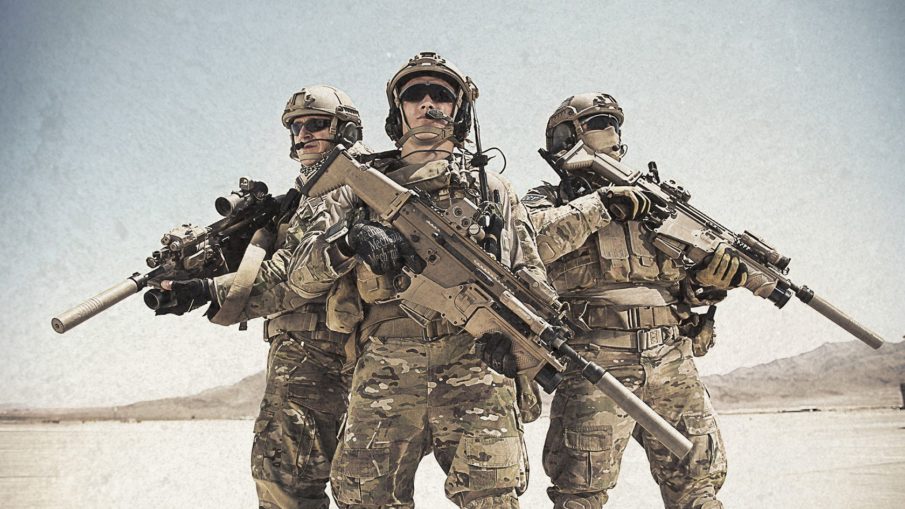When one talks about Special Operations Forces or operators in the US we immediately think of Navy SEALS, Delta Force Operators, Green Berets and MARSOC Raiders but the almost forgotten member of the SOF fraternity are the USAF’s Combat Controllers.
They are usually a part of most of the missions you’ll see the above-mentioned ufnits in, especially the Direct Action missions where close air support is nearby. But these troops do more than just call in the airstrikes, they can provide command and control and direct air traffic in remote areas, setting up airfields, and take an active role in the mission. They’re very versatile, well-trained in HALO, Combat Diver (SCUBA), and fast roping.
Having worked with the men of the scarlet beret, I can attest that they’re excellent troops and don’t get the credit that they deserve. So how do these operators who fly under the radar get trained? Let’s take a look at the two-year training cycle for CCT.
To begin with, this is always one of the Air Force’s most critically under strength career fields. There are only about 500 Combat Controllers on the books so they truly are a minority in the Air Force. Their training consistently washes out close to 80 percent of the men seeking to wear the scarlet beret.
Selection: Their Selection Course is just two weeks but it stresses the candidates to the max and identifies the right ones that will go on to the Combat Controller Operator Course. Some of the events that candidates must pass are push-ups, sit-ups, pull-ups, a 1.5-mile run, 500-meter swim, 4-mile ruck march, and an obstacle course.
Something the Air Force does to help the candidates prepare for Selection is to send would-be Controllers a 26-week training guide to help them get ready. About half or 50 percent of the candidates fail to meet the standards for Selection
Combat Controller Course: Once successfully passing Selection, the students will move to Keesler AFB, Mississippi for the meat and potatoes portion of their training. It lasts about four months and consists of intense physical training on the beaches with running in soft sand, sprints, firemen’s carries, buddy drags, and burpees to simulate real-world combat scenarios.
The rest of their days in the classroom are spent learning to be air traffic controllers alongside other airmen. The direct different airframes, run tower operations and are certified by the FAA (Federal Aviation Administration) as air traffic controllers at the end of the course. But for the Combat Controllers, this is just the first step.
Then their off to Ft. Benning, Georgia for the Army’s Jump School. The three-week course gets them ready to leap from aircraft using static line parachutes and infiltrate denied areas by using aircraft.
Survival Training at Fairchild AFB, Washington follows. The two-week basic survival course teaches airmen the rudimentary lessons of surviving in the wilderness in the case of an aircraft crash in a remote area or being cut off from friendly forces.
The controllers then go thru an intense 13-week Combat Control portion of their training at Ft. Bragg/Pope Air Field, North Carolina. Here they get their ground training in. Patrolling, land navigation, demolitions, communications, and fire support are among the myriad of training skills that they will learn and be tested on.
At the successful conclusion of their training at Pope, the airmen will don the scarlet beret and be considered combat controllers. But they still aren’t considered ready for deployment yet.
The airmen have passed the course but before they go out on deployments they must first attend Special Tactics Advanced Skills Training at Hurlburt Field, Florida. The training, which lasts from 12-5 months is intense and puts them in every conceivable condition that they may face in combat. They face different phases of training, ground, water, employment and full mission profile.
The full-mission profile is as close to real combat as the Air Force can replicate in the United States. During this phase of their training, certain controllers will be further tasked with learning HALO training at Ft. Bragg/Yuma, or Combat Diver in Panama City, Florida as additional methods of infiltration.
After all this training, they get sent to one of their operational units. There, the airmen of the CCT are likely to be sent individually to augment a SEAL or Delta Force team, a Special Forces A-team or a Ranger unit that is deployed in harm’s way. The Air Force has awarded seven Air Force Crosses for heroism since the Global War on Terror (GWT) began in 2001. Combat Controllers have been awarded five of them.
Photo courtesy of US Air Force
This article is courtesy of SpecialOperations.com










COMMENTS
You must become a subscriber or login to view or post comments on this article.